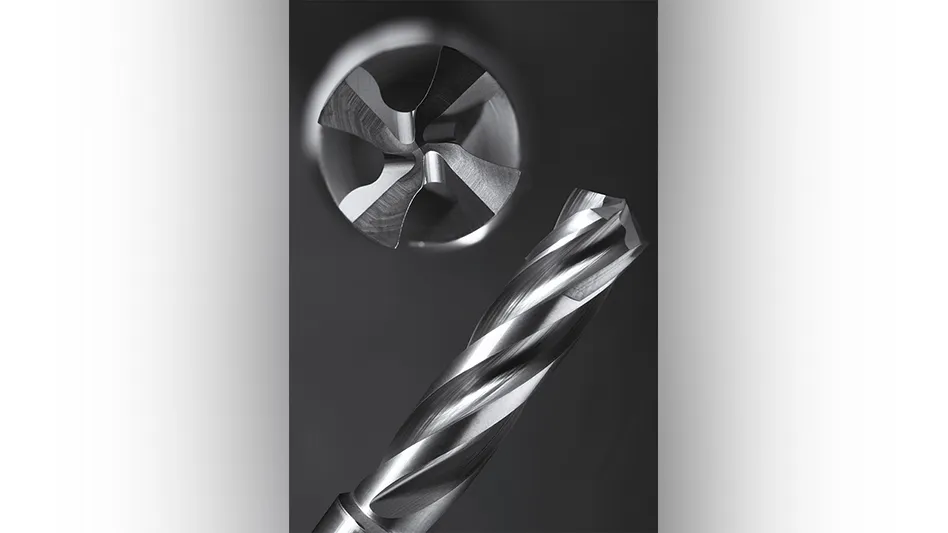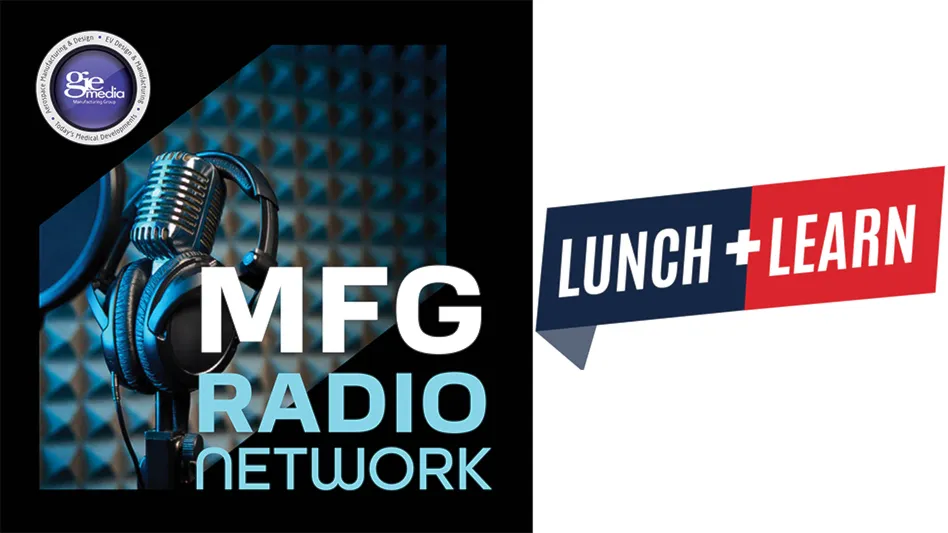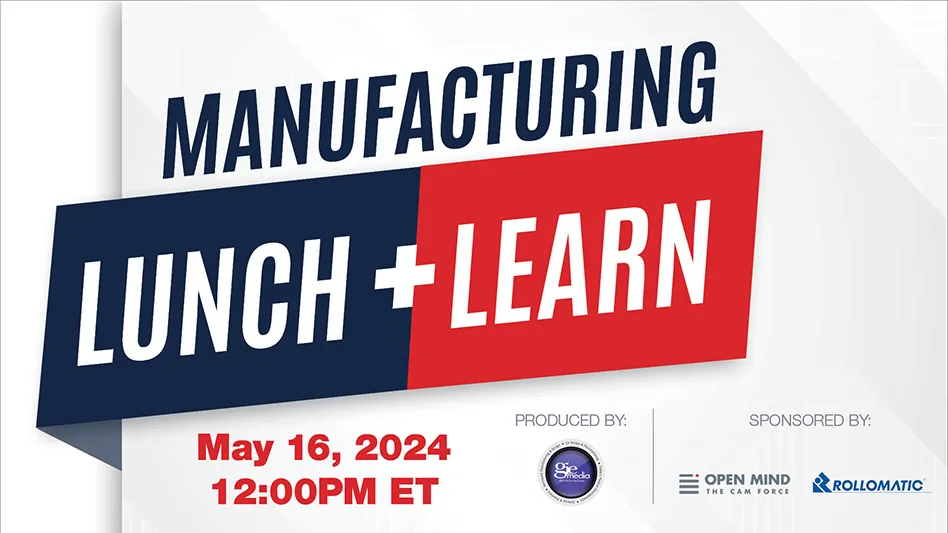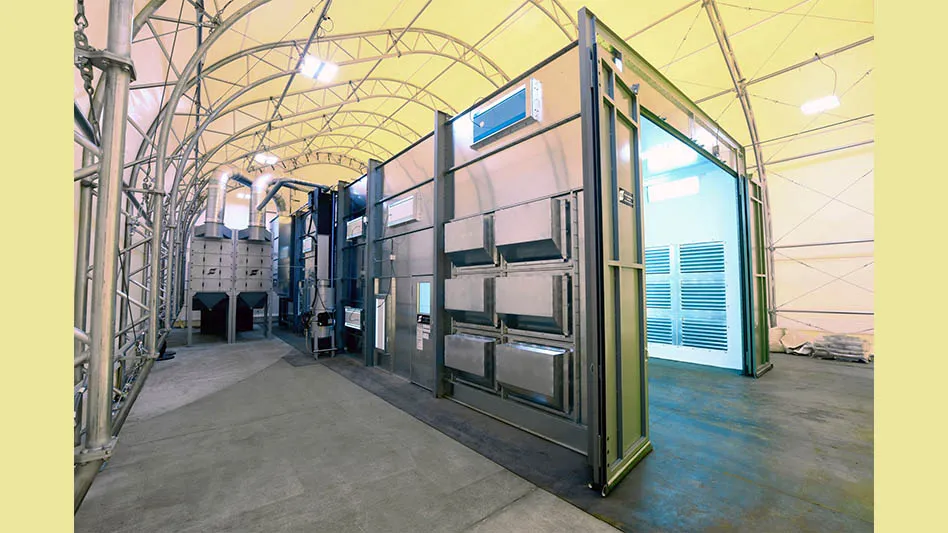
Titan Abrasive Systems
Farming out your abrasive blasting operation can be an ideal solution from a cost, quality, and product-delivery standpoint. But there are times when handling your abrasive-blasting needs within your own four walls, performed by your own employees, is a far better option. Let’s examine the rationale for bringing your blasting process under your own roof.
Reduced lead times
During the COVID epidemic, severe supply chain issues hindered companies from getting parts for their products. The ripple effect was felt all the way down to product delivery, with manufacturers often missing delivery deadlines and upsetting their customer base.
While recovery from those issues is still ongoing, it’s compounded by shipping products that require abrasive blasting. When you employ a job shop, you’re at the mercy of their schedule. If you want a part blasted quickly because a scheduled product delivery has been moved up, you’re probably going to be disappointed. Conversely, when you create your own in-house blasting operation, you can blast whatever you want, whenever you want. If a job requires immediate attention, the schedule can be adjusted as needed. Delivery times on products may still be an issue, but performing the blasting operation yourself will not be one of the bottlenecks.
Another consideration is that if your vendor is blasting outside, your job’s delivery – and possibly, quality – depends on something as unpredictable as the weather. If it rains for three days, then there is no blasting taking place. With your own indoor blast room, you can blast away to your heart’s content – 24/7 if you want to.
Money savings
Be well aware that setting up your own blasting operation is going to cost you. You’ll need a blast room (for smaller parts, you might only need a blast cabinet), blasting equipment, protective gear, and perhaps some modifications to your plant to accommodate everything. But the return on investment (ROI) will make it all worthwhile. You’ll save money in:
- The actual blasting: The cost depends on how many parts you blast, how often they get blasted, and the complexity of the blasting procedure (i.e., if the parts needs to be blasted to very tight tolerances). But when you in-source, regardless of other factors, those charges disappear.
- Blast media: When you take everything in-house, you’ll still need to purchase your own blast media. The difference is that when you outsource, your vendor will usually mark up the cost. With your own operation, you’ll be buying media at list price.
- Shipping and handling: It’s certainly costing you time and money to pack and ship your parts to your blasting shop. Depending on how many parts, how big they are, and how far away you’re sending them, this cost can become exorbitant.
- Parts damage: Regardless of how careful you package and transport your parts, there’s a chance they’ll get damaged going or coming back. It might not happen often, but once is too much, especially if it delays an order and angers a customer. And you may have to swallow the cost of an expensive part.
Better quality
Many job shops turn out quality work. Their people are skilled, their equipment is solid. But chances are, they’re blasting parts from multiple manufacturers. So, there is no way for them to know the nuances of each product as well as the suppliers who make them. As a manufacturer, you know every dimension, every curve, every weld of your part. Expecting an outside vendor to retain this kind of detailed information on every part they’re blasting is unrealistic.
Other issues can adversely affect quality. Perhaps your plant is located in an isolated area where there are few shops from which to choose. You may end up settling for less-than-optimal results, then eventually be forced to search for another vendor – one who could be hundreds of miles away. Do you settle for lower quality, or do you incur the costs associated with shipping your parts to a faraway location?
Cross-contamination is another major concern. Maybe you’re blasting one part, or multiple parts all made from the same material, such as stainless steel. Find the media that performs best and stick with it. Even if you use different blast media for other jobs, thoroughly clean out the blast room each time a job is finished to ensure cross-contamination doesn’t occur. Alternatively, have several blast rooms for each blast media used.
A blast shop, however, normally blasts all kinds of materials, and it’s unlikely they all require the same blast media. So, your part may be relegated to a blast room where a job was just completed using steel grit or aluminum oxide (both highly abrasive), but your part may need a softer media, like plastic. Are you willing to take the chance that the blast room being used was adequately cleaned so that cross-contamination doesn’t result in a poorly blasted product – or even damaged? With an in-house process, you don’t have to take that chance.
Bring in outside jobs
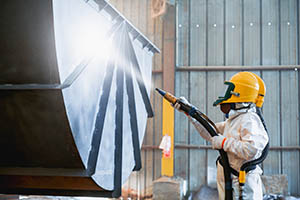
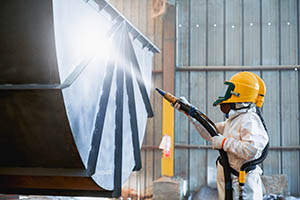
in your facility, you can potentially bring in
outside jobs and create a new revenue stream.
Now, you’re sending blasting jobs to an outside vendor. If you were to purchase a blast room and all the associated equipment, you could potentially be one of those vendors. This depends on how much time each day your blast room will be busy with your own projects, but if you can find some regular openings in your schedule, you may be able to take on outside work representing a significant revenue stream.
Getting started
At the outset, make sure that your facility is capable of housing a blast room and the associated equipment (i.e., reclaim system, dust collector, etc.). Here are some pertinent areas to address:
- Room size: You need a spot with enough total floor space to house the blast room. And the size of the blast room will depend on the size of the largest part you regularly handle. You need a room designed to fit your biggest part and house all the equipment and work on the part(s) comfortably.
- Location: If there isn’t enough room, you might have to construct an addition. Also, are there any obstructions hanging from the ceiling or issues with ceiling height)?
- Noise: Blast rooms create noise. The most common sources are the dust collector blower and the blasting nozzle. Decibel levels of 112dBA to 119dBA are generated when air is discharged from the nozzle, though workers wear hearing protection, and the blast room walls help dampen noise to the outside area. There are multiple solutions to the noise issue (e.g., blower silencers, rubber curtains, and portable sounds walls). Still, it’s best not to locate the room near any people working, offices, or reception areas.
- Dirt: It’s not a huge concern if blasters keep the dirt inside the room. Don’t track it around the building – or open the blast room door while the room is in operation.
- Regulations: NIOSH puts out some strict standards related to abrasive blasting and worker safety.
- Training: You have the option of using in-house personnel or hiring from outside. If training is necessary, there’s a learning curve (most reputable blast room vendors will provide some basic training). However, you might consider professionals if your blasting requires tight tolerances or if you’re blasting for long periods of time each day.
While there are clear benefits to creating an in-house blasting operation, the question of ROI needs to be addressed, and there’s no simple answer. There are myriad variables to calculate: the cost of the blast room and equipment; how many hours a day you’ll blast; how many parts you blast in a day, week, and month; the time and cost of training people or hiring outside help; possible building modifications; and whether you have employees on-site who can handle technical issues.
But for some companies, cost isn’t the primary factor. They simply want control over when their products get blasted, and they also believe that quality can be better controlled when the work is done in-house. Melody Moccia, Vice President of Operations for Emery Winslow, brought their abrasive blasting operation in house, with sound rationale to back up their decision.
“We crunched the numbers and saw that we would get a payback on our equipment in less than 24 months,” she said. “Given our volumes, we figured doing the blasting in-house will cost nearly 42% less than having it done on the outside. Since we had the talent, ample cashflow for the equipment purchase, and adequate facilities, this decision was a no-brainer.”
About the author: Brandon Acker is president of Titan Abrasive Systems, a designer of blast rooms, blast machines, and related equipment for a variety of industries. Visit their websiteat or follow them on LinkedIn at https://www.linkedin.com/company/titan-abrasive/.
Latest from Aerospace Manufacturing and Design
- Garmin earns best supplier recognition from Embraer for 9th consecutive year
- Dillon Manufacturing's Carbinite coating
- #43 Manufacturing Matters - 2024 Spring Aerospace Industry Outlook with Richard Aboulafia
- US operator UrbanLink orders 20 Lilium Jets
- TJ Davies’ retention knobs
- Mazak's VC-Ez 16X for aerospace machining
- India’s IndiGo orders 30 Airbus A350 widebody aircraft
- Techman Robot unveils high-payload AI cobot TM30S at Automate
